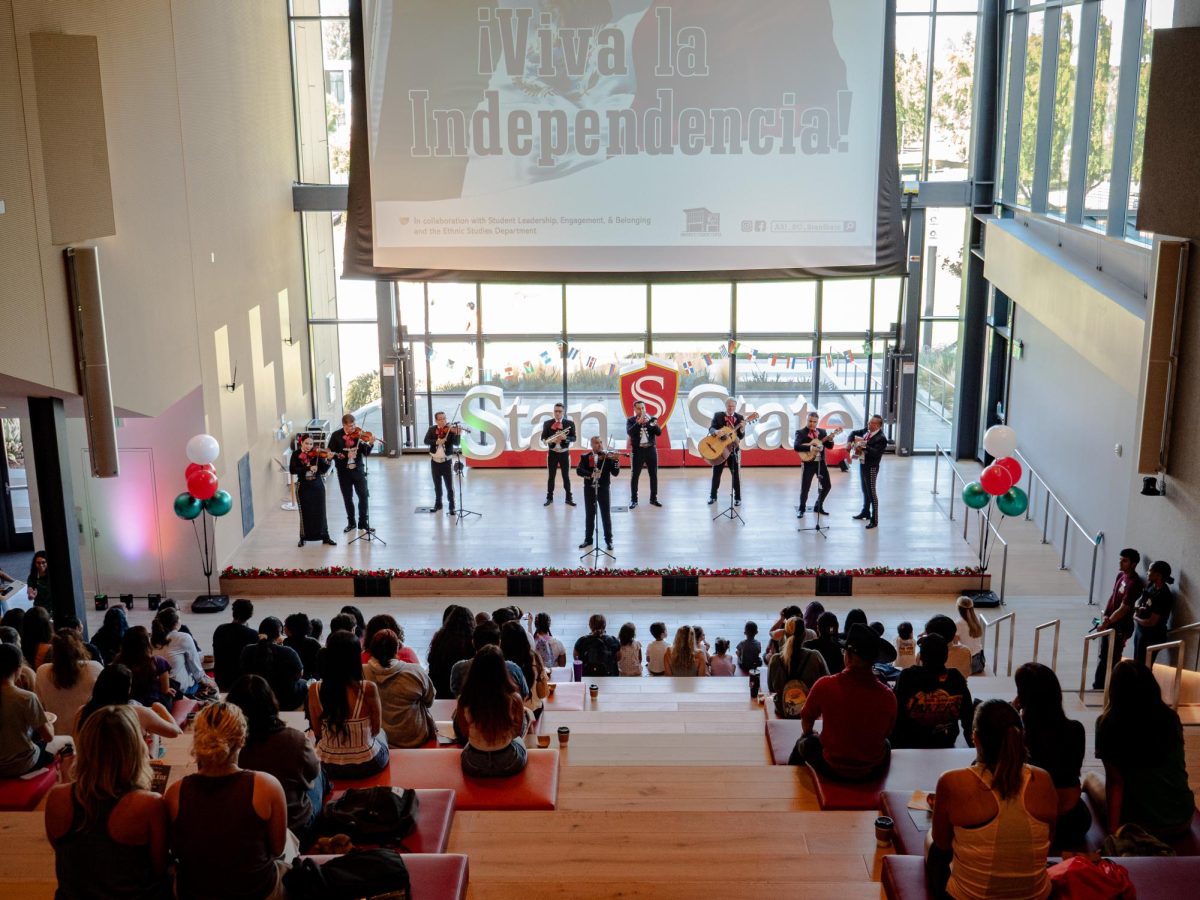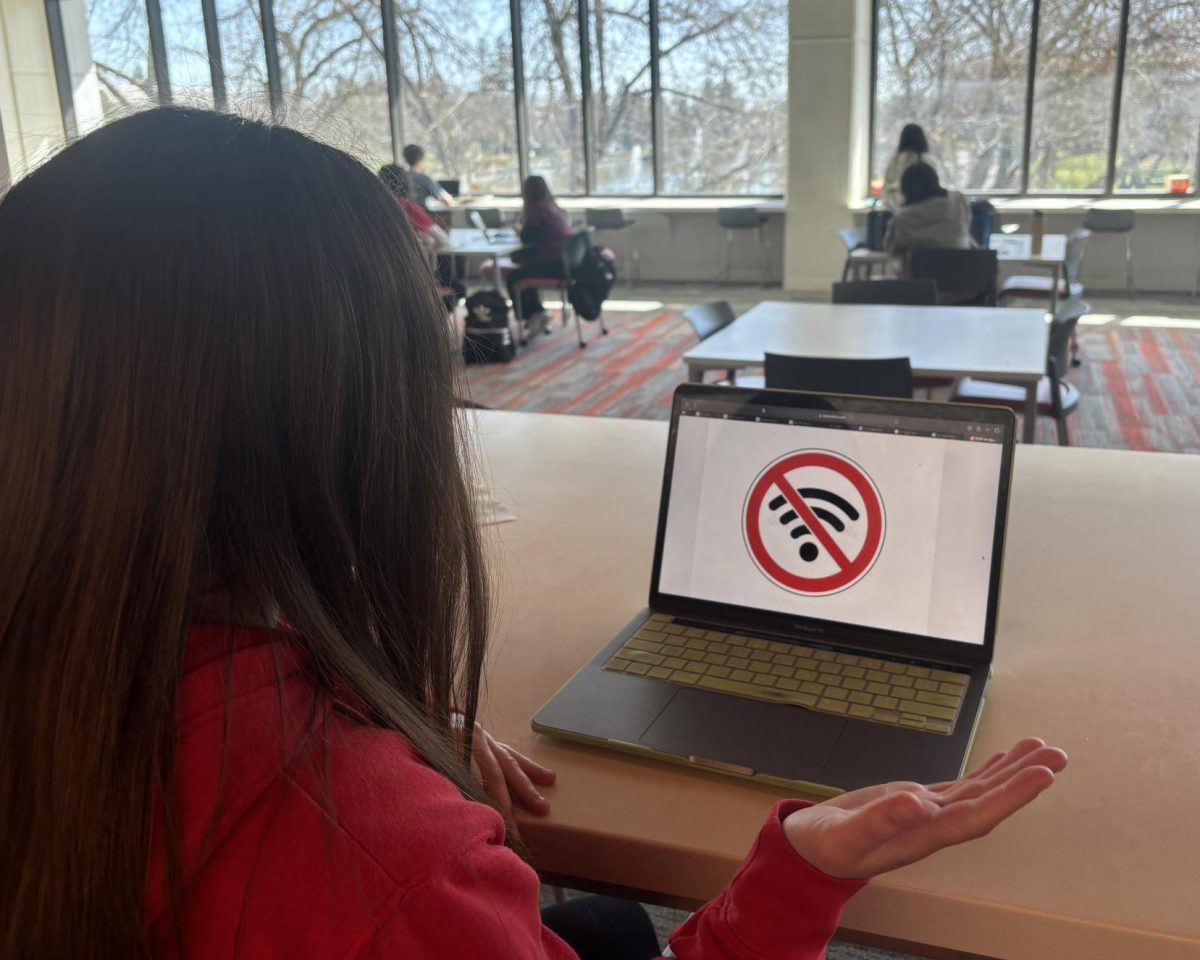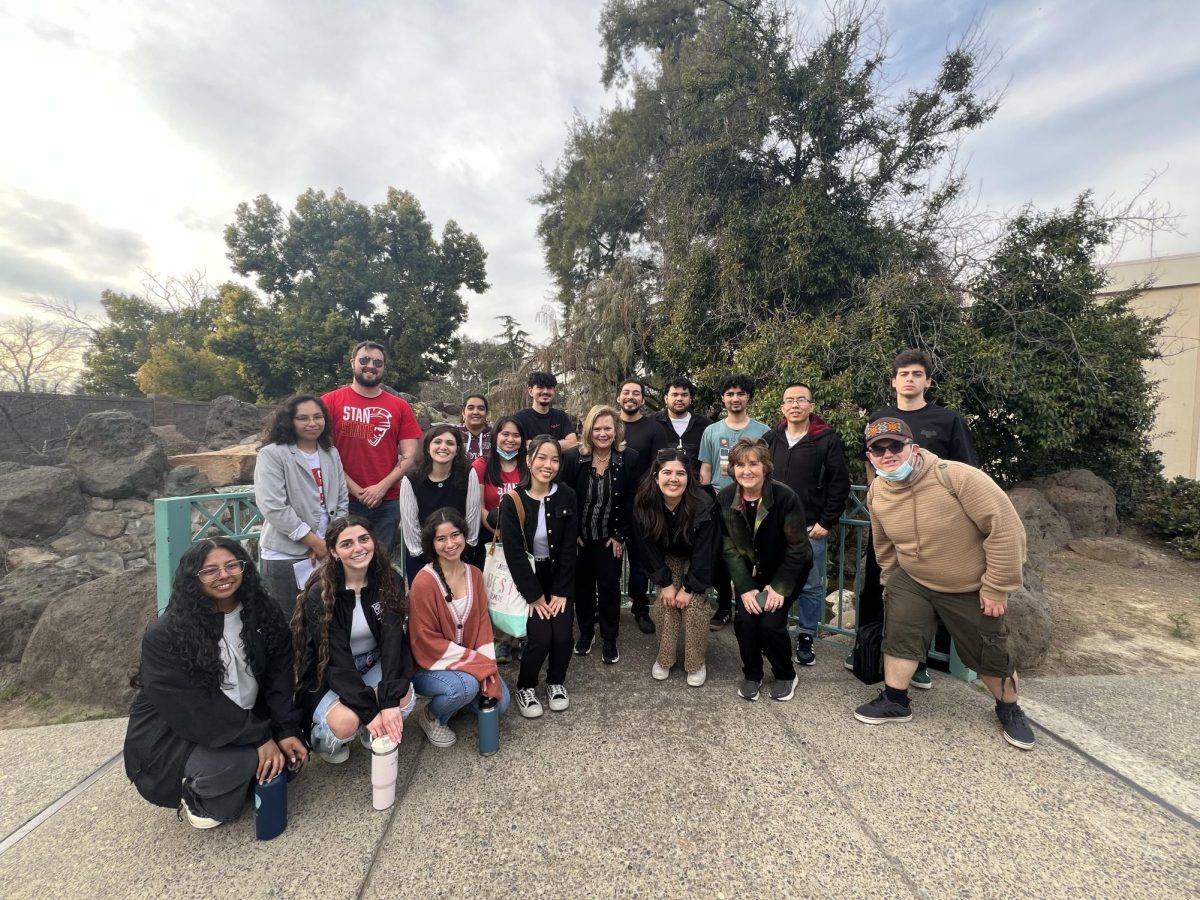The Department of Music at California State University, Stanislaus presented their Wind Ensemble concert on Thursday, March 14 at 7:30 p.m. in the Bernell and Flora Snider Music Recital Hall.
The Wind Ensemble presented a great variety of music, including standard wind ensemble and concert band repertoire from established and emerging composers.
Due to its excellence, the Wind Ensemble has gained extensive acknowledgements for its diverse and creative programs.
They have performed throughout California, the western U.S. and on tours internationally.
Dr. Stuart Sims, the Associate Professor of Music and Coordinator of Instrumental Studies at CSU Stanislaus, is the widely recognized conductor of the Wind Ensemble and the Chamber Orchestra.
This concert provided a blend of sounds from different musical instrument families such as the piano and winds accompanied by percussion, which made for an outstanding performance.
The program consisted of four different pieces: “Danza Final from Estancia” (1943), “Suite Francaise” (1944), “Ghost Train” (1993-95) and “Apollo Unleashed from Symphony No. 2” (2003).
Audience members, myself included, were surprised by the concert. Although we assumed it would be a bore, we were amazed by the first performance. An intense combination of the snare drum with the flute’s intricate runs and dramatic crescendos took possession over the audience’s attention.
“It had such a strong sound that I was not expecting,” Rachel Le (freshman, Art) said. “I thought it was going to be softer and slow, like any other concert.”
The first piece “Danza Final from Estancia” was a complete shot of adrenaline. The short allegro piece is about a city boy struggling to win over an Argentinean country girl.
The flute’s performance with the beating of the drums made me feel like I could actually see the city boy chase the country girl around, get rejected and finally win her over.
The second performance, “Suite Francaise,” was a slower piece. This long five-part composition was not my favorite. Each section had a similar tempo, not a lot of variety considering it’s supposed to be flavorful, and there was no connection with the audience.
By far the most creative and personal favorite piece of the show was composer Eric Whitacre’s “Ghost Train.”
This three-movement symphony recreated the feeling of passengers boarding and departing from the train station at night. The bells, whistles and steam engines of the trains were incredibly realistic.
“It was like actually being on a train!” audience member Kayte Putney said. “It woke me up!”
“They could make train sounds,” Allyson Williams (freshman, History) said. “I didn’t think instruments could make noises like the whistle and the wheels moving. All of that was very neat and cool.”
There was a beautiful, chilling moment during the symphony, due to the combination of the piano, tuba, percussion, saxophone, euphonium, trumpet and the horn. One moment the piece was soft and slow, the next the tempo gradually quickened to an accelerando leading to these explosive sounds.
“My favorite part of tonight was performing Ghost Train,” piccolo soloist Sarah Putney said. “I love playing that piece, and we all really enjoyed having something different because there are a lot of different techniques in there that are not standard and are fun to play.”
“Ghost Train was probably my favorite piece,” Dr. Sims said. “It is usually a favorite for the audience and the students and my favorite too. There is just so much going on with that piece.”
Bringing the concert to an end was the energetic, fast tempo, story of the Greek god Apollo with “Apollo Unleashed from Symphony No.2.” This piece had bright sonorities, galloping rhythms and a sense of urgency leading to a climatic ending.
It was apparent that Dr. Sims took the time to create a high-value concert for students and audience members. The concert was sensational.
Categories:
Music Department blows away audience at Wind Ensemble concert.
By Jeanette Ochoa
•
March 26, 2013
0
Donate to Signal
Your donation will support the student journalists of California State University, Stanislaus. Your contribution will allow us to purchase equipment and cover our annual website hosting costs.
More to Discover






